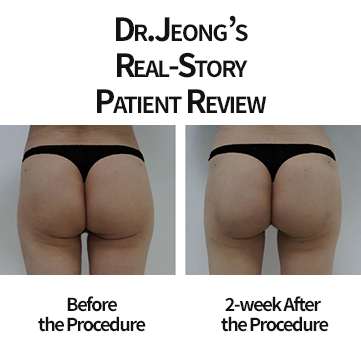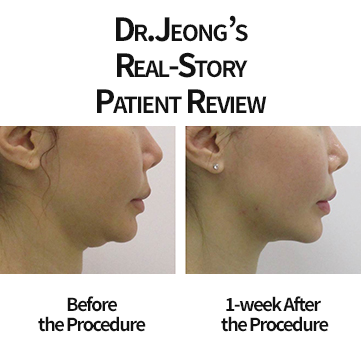Today, we will be discussing a case where we had to perform a reoperation on a patient who was experiencing stress due to an incorrect thread lifting procedure. We will be examining this case with the help of pictures.

One month after undergoing a thread lifting procedure at another hospital, the patient experienced sagging under the cheekbones and along the jawline. The skin was also bulging towards the area below the ears, making the square jaw more prominent. The overall face was not smooth, causing the patient stress.
The patient came to us wanting the lifting thread removed and the facial line tidied up.

The blue arrow indicates the area where the thread was pulled too tightly, causing sagging. The red arrow points to the area where the skin was bulging due to inappropriate lifting.
We removed the existing thread without leaving a scar through a minimal incision of about 2mm.

The thread used was a semi-permanent material with elasticity, which is widely used these days.
After removing the thread, we improved the sagging under the cheekbones and made the facial line smoother. We then performed a thread lifting reoperation.
Now, let’s look at the post-operative pictures.

The square jaw was prominent, and there were sagging areas here and there. The overall facial line, which was not smooth, can be seen to be slim and smooth after the procedure.
The patient was also very happy that her bumpy face became smooth. It was a rewarding procedure for us as well.
Now, let’s compare the before and after pictures of the patient side by side.


At a glance, you can see that the bumpy and wide face has become smooth and slim. You can see the improvement.
Lifting procedures do not necessarily make you prettier by pulling in the opposite direction of sagging. It doesn’t necessarily make you prettier by filling in the sagging areas either.
The depth of the thread insertion, the direction and strength of the pull, etc., need to be finely adjusted according to the individual characteristics of the patient in order to achieve satisfactory results.
We have looked at the removal and reoperation of thread lifting in cases where the thread lifting procedure was not satisfactory.
Thank you.






